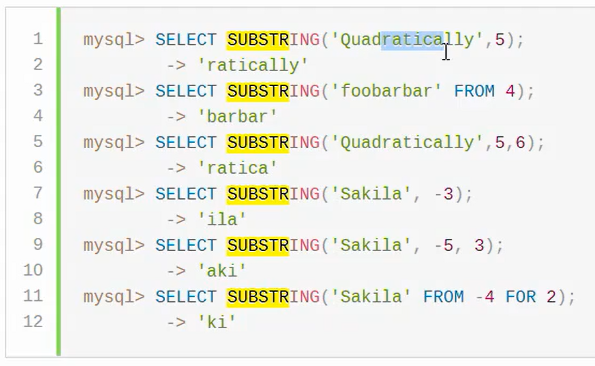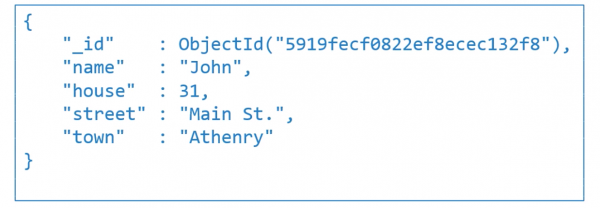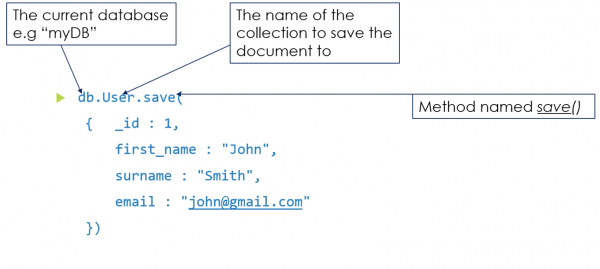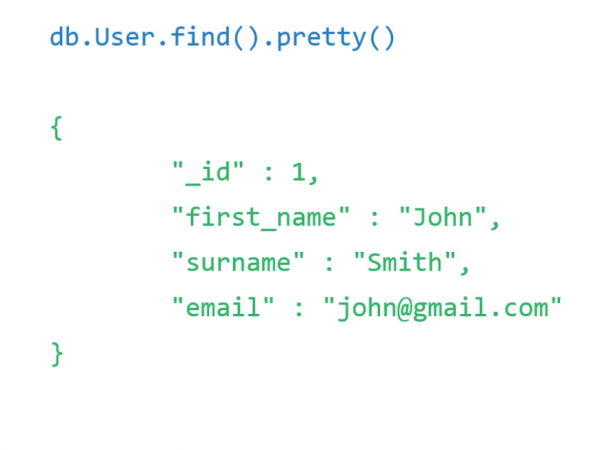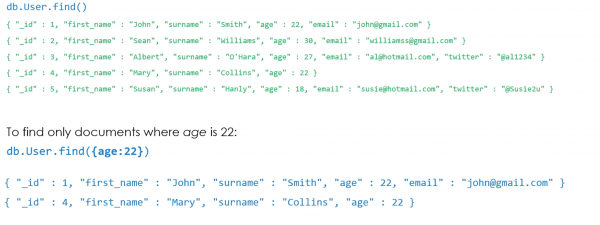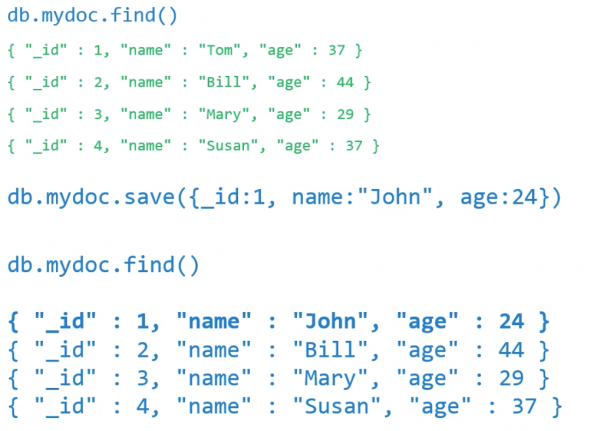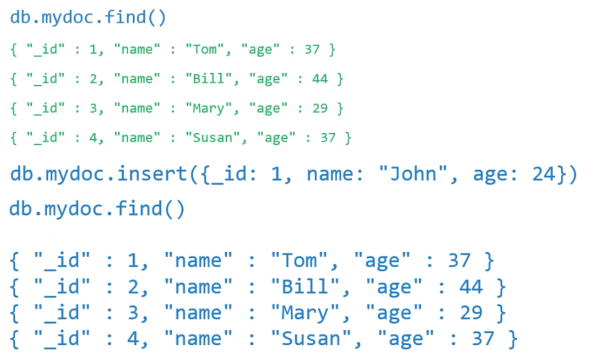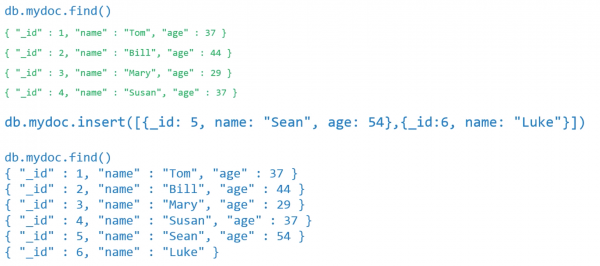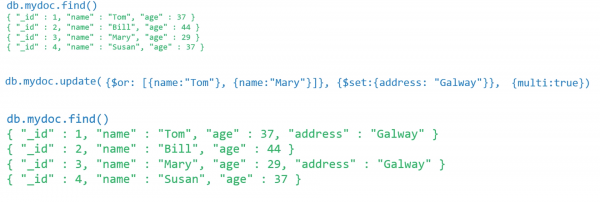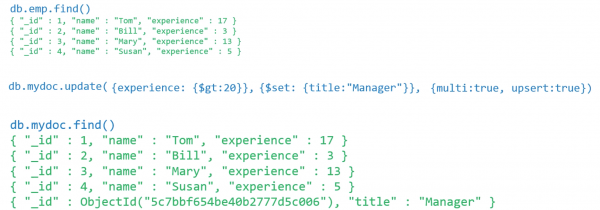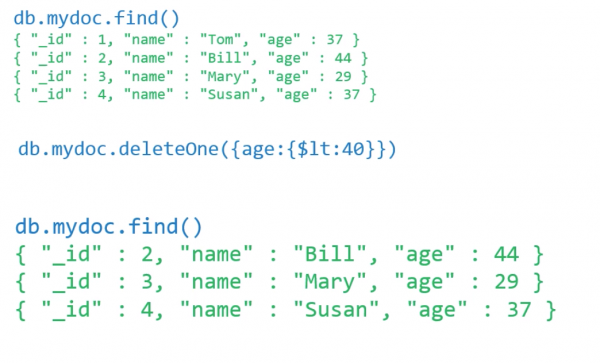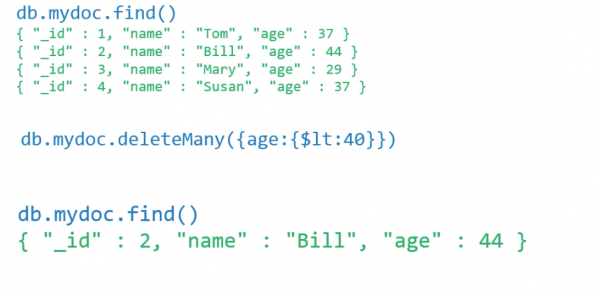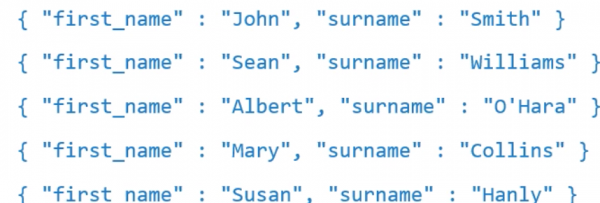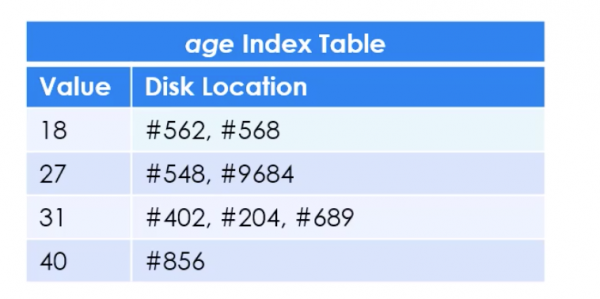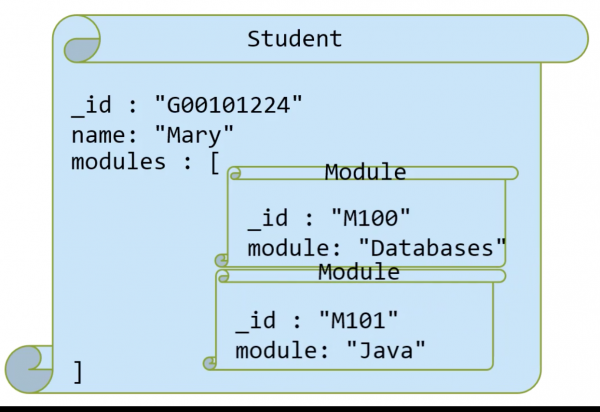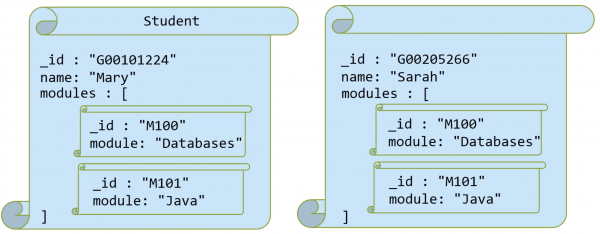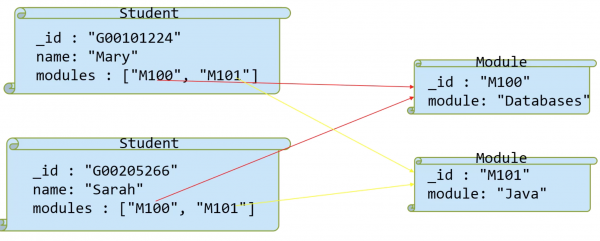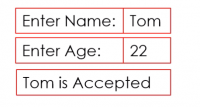Table of Contents
| DATA ANALYTICS REFERENCE DOCUMENT |
|
|---|---|
| Document Title: | 52553 - Applied Database |
| Document No.: | 1548347488 |
| Author(s): | Rita Raher, Gerhard van der Linde |
| Contributor(s): | |
REVISION HISTORY
| Revision | Details of Modification(s) | Reason for modification | Date | By |
|---|---|---|---|---|
| 0 | Draft release | 52553 - Applied Database reference page | 2019/01/24 16:31 | Gerhard van der Linde |
52553 - Applied Databases
Module Breakdown
- 40% continuous assessment
- 60% for a final project
I'll detail the breakdown of the 40% continuous assessment over the coming weeks in the module.
Week 1 - Introduction
What is data
- Datum
- Single piece of information fact or statistic.
- Data
- A series of facts or statistics.
- Types of Data
- Non digital information.
- Digital Information
- Active Digital Footprint
- Passive Digital Footprint
Ever increasing data… per minute
- 120+ new professionals join LinkedIn
- 456,000 tweets sent
- 3.6 million Google searches
- 4.1 million YouTube videos watched
- 18 million weather forecast requests received
Databases
- Relational Databases

- Non-Relational (NoSQL) Databases
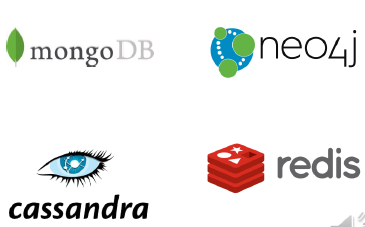
Relational Databases
- A relational database consists of a set of tables used for storing data.
- A table is collection of related data
- Each table has a unique name and may relate to one or more other tables in the database through common values.
- A table in a database is a collection of rows and columns. Tables are also known as entities or relations.
- A row contains data pertaining to a single item or record in a table. Rows are also known as records or tuples.
- A column contains data representing a specific characteristic of the records in the table. Columns are also known as fields or attributes.
Spreadsheets
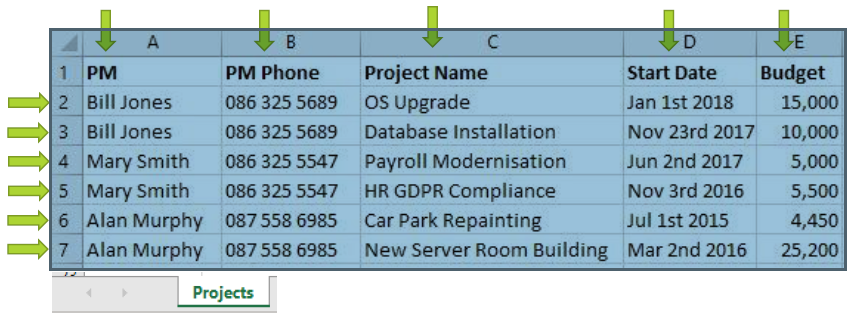

Database Schema
- A database consists of schemas, tables, views and other objects.
- A database schema represents the logical configuration of all or part of a database.
- It defines how the data, and relationships between the data, is stored
- Two types of Schema:
- Physical Schema - Defines out how data is stored physically on a storage system in terms of files and indices.
- Logical Schema - Defines the logical constraints that apply to the stored data, the tables in the database and the relationships between them.
Logical Schema
- The Logical Schema is designed before the database is created.
- No data is contained in the logical schema.


Spreadsheets vs Databases

Database Management System (DBMS)
- A Database Management System (DBMS) is software for creating and managing databases.
- The DBMS interacts with the user, the database itself, and other systems in order to store, retrieve and process data.
- The DBMS provides a centralized view of data that can be accessed by multiple users, from multiple locations, in a controlled manner.
- The DBMS can limit what data the end user sees, as well as how that end user can view the data, providing many views of a single database schema.
- The DBMS provides data independence, freeing users (and application programs) from knowing where or how the data is stored. Any changes in how or where the data is stored is completely transparent due to the DBMS.
- CRUD (Create, Read, Update, Delete) functions

DBMS Functions
- Data Storage Management
- Security
- Backup and Recovery
- Transaction Management
- Debit Customer a/c
- Update Shipping Table
- Update Products Table
- Credit Store a/c
- Data integrity
- Concurrency

Advantages of DBMSs
- Controlling Redundancy
- Data Integrity
- Enforcement of Standards
- Backup and Recovery
- Security
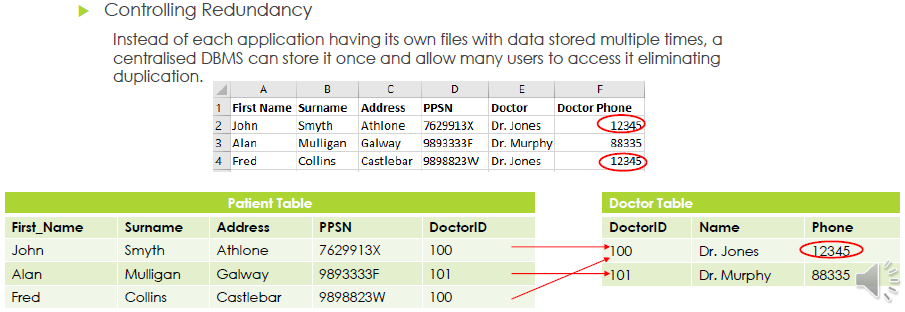
Disadvantages of DBMSs
- Complexity
- Size
- Performance
- Higher impact of failure
Week 2 - Getting Info from Databases
SQL
- Structured Query Language
- Standard Relational Database Language
- SQL is an ANSI/ISO standard, but different databases e.g. MySQL, SQL Server, Oracle may use their own proprietary extensions on top of the standard SQL.
What can SQL do?
CRUD
- Create a new database
- Create tables in a database
- Insert data into a database
- Read data from a database
- Update data in a database
- Delete data from a database
- Manage transactions
- Manage concurrency
- Backup and recovery
- Manage users
SQL vs MySQL
- SQL is a language.
- MySQL is a database management system.
Creating a database
mysql> create database myFirstDatabase; Query OK, 1 row affected (0.01 sec)
mysql> CREATE dataBase MYFirstDATABASE; Query OK, 1 row affected (0.01 sec)
mysql> create -> database -> MyFirstDatabase -> ; Query OK, 1 row affected (0.01 sec)
Using a Database
mysql> show databases; +--------------------+ | Database | +--------------------+ | information_schema | | myfirstdatabase | | mysql | | performance_schema | | sys | +--------------------+ 5 rows in set (0.00 sec)
mysql> use myfirstdatabase; Database changed
Creating Tables
Car Attributes
- Make - Varchar(20)
- Model - Varchar(20)
- Registration - Varchar(20)
- Colour - Varchar(20)
- Mileage - Integer
- Engine Size - float(2,1)
- Cylinders
- Crankshaft
mysql> create table car ( -> make VARCHAR(20), -> model VARCHAR(20), -> registration VARCHAR(15), -> colour VARCHAR(10), -> mileage INTEGER, -> enginSize FLOAT(2,1)); Query OK, 0 rows affected (0.09 sec)
Describing Tables
mysql> describe car; +--------------+-------------+------+-----+---------+-------+ | Field | Type | Null | Key | Default | Extra | +--------------+-------------+------+-----+---------+-------+ | make | varchar(20) | YES | | NULL | | | model | varchar(20) | YES | | NULL | | | registration | varchar(15) | YES | | NULL | | | colour | varchar(10) | YES | | NULL | | | mileage | int(11) | YES | | NULL | | | enginSize | float(2,1) | YES | | NULL | | +--------------+-------------+------+-----+---------+-------+ 6 rows in set (0.02 sec)
Primary key
Primary key - unique values. 1 primary key pair table add personID - int auto_increment flag to increase
Using reg as primary key
reg VARCHAR(15) PRIMARY KEY(reg)
SELECT
WHERE
where >=, <=, Between
SELECT personID, NAME, AGE FROM person WHERE age >= 20 AND age <= 39; SELECT personID, NAME, AGE FROM person WHERE age between 20 and 39;
Like
SELECT personID, NAME, AGE FROM person WHERE name LIKE “%a%”; SELECT personID, NAME, AGE FROM person WHERE name LIKE “_a%”;
IN
AND OR
SELECT personID, NAME, AGE FROM person WHERE age IN (12, 13, 14, 15); SELECT NAME, AGE FROM person WHERE sex =“M” AND name LIKE “S%” OR name LIKE “A%"
Limit
SELECT NAME, AGE FROM person WHERE sex =“M” AND name LIKE “S%” OR name LIKE “A%" LIMIT 1; SELECT NAME, AGE FROM person WHERE sex =“M” AND name LIKE “S%” OR name LIKE “A%" LIMIT 0,3;
DISTINCT
order by name DESC
YEAR() DAY()
SELECT name, age, MONTHNAME(dob) FROM person WHERE day(DOB) between 1 and 11 AND name NOT like “A%" order by name DESC
Import a database
Week3 - Applied Databases MySQL Functions and Procedures
Functions
- Mysql can do more than store and retrieve data
- It can also manipulate the data before storing or retrieving it, via functions.
- A function is a piece of code that performs some operation and returns a result.
- Some functions accept parameters, others do not
Built-in functions
- String functions https://dev.mysql.com/doc/refman/8.0/en/string-functions.html
- Numeric functions https://dev.mysql.com/doc/refman/8.0/en/numeric-functions.html
- Date and time functions https://dev.mysql.com/doc/refman/8.0/en/date-and-time-functions.html
- Aggregate functions https://dev.mysql.com/doc/refman/8.0/en/group-by-functions-and-modifiers.html
- MySql Information Functions https://dev.mysql.com/doc/refman/8.0/en/information-functions.html
- MySQL Control Flow Functions https://dev.mysql.com/doc/refman/8.0/en/control-flow-functions.html
String Functions
- Upper()
- Returns an uppercase version of a string
- STRCMP(): Compares two strings and returns:
- 0 if string 1 - string 2
- -1 if string 1 < string 2
- 1 if string 1 > string 2
- ASCII()
- Returns the ASCII value of the first character in a string
- REPLACE(string, from_string, to_string)
- Replaces all occurrences of s substring within a string, with a new substring
- string - The original string
- from_string - The substring to be replaced
- to_string - The new replacement string
REPLACE(name, “Ms”, “MRS”)
- SUBSTR(string, start, length)
- extract a substring from a string
- string - the start to extract from
- start - The start position within the string
- length - The number of character to be extracted
SUBSTR(name, 1, 3)**
- SQRT(Number)
- Returns the square root of a number
- Round(number, decimals)
- Rounds a number to a specified number of decimal places
ROUND(enginesize)
- DATEDIFF(date1, date2)
- returns the number of days between the 2 dates
- DATE_FORMAT(date, format)
- formats a date
DATE_FORMAT(dob, "%d-%m-%y”)
Aggregate Functions
An aggregate function performs a calculation on a set of values and returns a single value.
- AVG()
- MIN()
- MAX()
- SUM()
- COUNT()
Group By The groupie statement is often used with aggregate functions(COUNT, MAX, MIN, SUM, AVG) to group the result-set by one or more columns
SELECT level, AVG(experience) FROM teacher GROUP BY level; SELECT ROUND(AVG(mileage)) as “KMs” FROM car; SELECT model, ROUND(AVG(mileage)) as “KMs” FROM car GROUP BY model; SELECT model, ROUND(AVG(mileage)) as “KMs” FROM car WHERE mileage > 60000 GROUP BY model;
HAVING
- The HAVING clause is often used with the GROUP BY clause to filter groups based on a specified condition.
- if the GROUP BY clause is omitted, the having clause behaves like the WHERE clause.
- The HAVING clause applies a filter condition to each group of rows
- The WHERE clause applies the filter condition to each initial row.
SELECT model, ROUND(AVG(mileage)) as “KMs” FROM car WHERE mileage > 60000 GROUP BY model HAVING KMs > 250000;
Information Functions
Control Flow Functions
- IF(condition, value_if_true, value_if_false)
- condition - value to test
- value_if_true - Value to return if condition is True
- value_if_false - Value to return if condition is False
SELECT IF(150>200, “yes”, “no”)”T/F”;
SELECT *,IF(experience >= 20 AND experience <= 45, “Y”, “”) as “Payrise Due” FROM teacher
CASE WHEN condition 1 THEN result 1 WHEN condition 2 THEN result 1 WHEN condition n THEN result n ELSE result END
SELECT name, dob, CASE WHEN month(dob) in (2,3,4) THEN “Spring” WHEN month(dob) in (5,6,7) THEN “Summer” WHEN month(dob) in (8,9,10) THEN “Autumn” WHEN month(dob) in (11,12,1) THEN “Winter” END as Season from person;
SELECT name, dob, CASE WHEN month(dob) in (2,3,4) THEN “Spring” WHEN month(dob) in (5,6,7) THEN “Summer” ELSE “" END as Season from person;
Stored Routines
A stored routine is user-written code that extends the functionality Mysql.
Uses
- When multiple client apps are written in different languages or work on different platforms, but need to perform the same database operations.
- To ensure security. Applications cannot directly access tables only stored routines.
Advantages
- Speed
- Performance of applications accessing the database is increased.
- This is because stored procedures are complied and stored in the database
- Traffic
- Instead of sending multiple lengthly SQL statements, the application has to send only the name and parameters of the stored routine.
Disadvantages
- Complexity
- Not designed for complex business logic
- Difficult to debug. Only a few database management systems allow to debug stored procedure. MySQL is not one of them.
- Performance. A DBMS is not well-designed for logical operations.
MySQL Stored Functions
- A stored fountain is a special kind stored routine that returns a single value.
- Stored functions are used to encapsulate common formulas or business logic rules that are reusable among Sql statement or stored routine.
- A functions take 0 or more input parameters and return a single value
https://dev.mysql.com/doc/refman/8.0/en/create-procedure.html
CREATE FUNCTION add2Nums(num1 integer, num2 integer) RETURNS integer DETERMINISTIC BEGINS RETURN num1 + num2; END SELECT add2Nums(3, 10);
CREATE FUNCTION discount(age INT(11)) RETURNS VARCHAR(3) DETERMINISTIC BEGIN IF age < 16 THEN RETURN “0%”; ELSEIF age < 26 THEN RETURN “10%”; ELSEIF age < 40 THEN RETURN “20%”; ELSEIF age < 60 THEN RETURN “30%”; ELSE RETURN “40%”; END IF; END
SELECT name, age, discount(age) “Discount” FROM person
Stored Procedures
| FUNCTIONS | PROCEDURES |
|---|---|
| Return a single value | Retun 0 or more values |
| Only select | select, insert, update, delete |
| Cant use stored procedures | can use stored functions |
| Does not support transactions | Support transactions |
https://dev.mysql.com/doc/refman/8.0/en/create-procedure.html
Create procedure CREATE PROCEDURE make_mileage(mk VARCHAR(20), ml INT(11)) DETERMINISTIC BEGIN SELECT * FROM CAR WHERE make LIKE mk AND mileage < ml ORDER BY mileage; END
Call Procedure
call make_mileage(“Toyota”, 200000) call make_mileage(“Ford”, 5000)
MySQL Routine Management
Finding Functions and Procedures
SELECT name, type from MYSQL.PROCE limit 3;
What’s in a function Procedure
SHOW CREATE FUNCTION add2nums;
Drop a Function or Procedure
DROP FUNCTION add2nums
Week 4 - Normalisation
Normalization is the process of organizing the columns (attributes) and tables (relations) of a relational database to minimize data redundancy.
show create table
show create table manufacturer; +--------------+-------------------------------------+ | Table | Create Table | +--------------+-------------------------------------+ | manufacturer | CREATE TABLE `manufacturer` ( `manu_code` varchar(3) NOT NULL, `manu_name` varchar(200) NOT NULL, `manu_details` varchar(400) DEFAULT NULL, PRIMARY KEY (`manu_code`) ) ENGINE=InnoDB DEFAULT CHARSET=latin1 | +--------------+-------------------------------------+ 1 row in set (0.00 sec)
Get info from multiple tables
- INNER JOIN
- LEFT JOIN
| INNER JOIN | LEFT JOIN |
|---|---|
| Return rows from two tables only when the JOIN condition is met. | Retrun rows from two tables when the JOIN condition is met. |
| If JOIN condition is not met, nothing is returned from either table. | If JOIN condition is not met, rows from the first (LEFT) table are returned and NULL is returned instead of rows from the second table. |
Functions needed for exercises
Topic 5 - Insert Update Delete
Insert
- CRUD (Create/Insert, Read, Update Delete)
https://dev.mysql.com/doc/refman/8.0/en/insert.html - INSERT INTO <table> VALUES (value1, value2, valueN);
- INSERT INTO <table> (column1, column2, column)
VALUES (value1, value2, valueN);
INSERT INTO person VALUES(1, "John", 23, "M", 1);

INSERT INTO person (age, sex, isStudent) VALUES (20, "F", 0);
https://dev.mysql.com/doc/refman/8.0/en/working-with-null.html
Update
https://dev.mysql.com/doc/refman/8.0/en/update.html
- UPDATE <table> SET column1 = value1, columnN, valueN;
- UPDATE <table> SET column1 = value1, columnN, valueN
WHERE condition;
UPDATE Person SET age = 23 WHERE personID = 3; UPDATE person set name = CONCAT(IF(sex="M", "MR.", "Ms.",name));
Delete
https://dev.mysql.com/doc/refman/8.0/en/delete.html
* DELETE FROM <table>;
* DELETE FROM <table>
WHERE condition;
DELETE from PERSON WHERE personID = 6; DELETE FROM person WHERE sex = "M" AND isStudent AND age > 20;
Foreign Keys
Foreign keys can be used to define table behavior when data is deleted. The default behavior for MySQL is ON DELETE RESTRICT, even if not specified.
- ON DELETE RESTRICT
- ON DELETE CASCADE
- ON DELET SET NULL
| MySQL Command | MySQL Behaviour |
|---|---|
| RESTRICT | Prevents entried from being deleted where a foreign key exists |
| CASCADE | Proceed to delete entries from the table worked on as well as deleting the referenced entries |
| SET NULL | Delete the entries after setting the references to NULL |
READ using SubQueries
SELECT emp_no, first_name, last_name FROM employees WHERE emp_no IN( SELECT emp_no FROM salaries WHERE salary = ( SELECT MAX(salary) FROM salaries ) );
Topic 6 - MongoDB I
Why NoSQL Databases?
Scalability
Unstructured Data
MongoDB
- Document Database
- Schemaless
- Horizontal Scalability Through sharding1)
- Duplication of data
JSON
- JSON - JavaScript Object Notation
- Lightweight data-interchange format
- Machine/Human readable
- Language independent
- JSON Structure
- Name/Value pair
- Ordered Lists
JSON Datatypes
Number
{ "id" : 1 }
{ "id" : 3.14 }
Note that there is no distinction between integer and floating point numbers.
String
{ "id" : 1, "fname" : "John" }
Boolean
{ "reg" : "09-G-13" "hybrid" : false }
Array
{ "student" : "G00257854" "subjects" : ["Databases", "Java", "Mobile Apps"] }
Object Document
{ "student" : "G00257854" "address" : { "street" : "Castle Street" "town" : "Athenry" "county" : "Galway" } }
JSON USES
MongoDB, JSON and BSON
- JSON object = MongoDB document
- Internally, MongoDB represents JSON documents in binary-encoded format called BSON (Binary JavaScript Object Notation)
- BSON extends JSOM model to provide additional data types as well as indexes.
MongoDB Structures
Document 
A document is record in a MongoDB collection and the basic unit of data in MongoDB. Documents are analogous to JSON objects or records in an RDBMS.
Collection
- A grouping of MongoDB documents.
- Collections are analogous to RDBMS tables.
- A collection exists within a single database.
- Collections do not enforce a schema. Documents within a collection can have different fields.
- Typically, all documents in a collection have a similar or related purpose.
Database A number of databases can be run on a single MongoDB server.
MongoDB Commands
- show dbs - Show Databases
- use myDB - Switch to databases named “myDB” (If it doesn't exist, Mongo creates it)
- db - Show current Database.
- show collections - Show collections in the current database
MongoDB Rules for creating a Document
- Rules for MongoDB documents
- A document must have an _id field. if one is not provided, it will be automatically generated
- The _id cannot be an array
Create a document - save()
Query the database - find()
$and
$or
$in
Attribute
Attribute and age is greater than 20
findOne()
sort()
MongoDB -_id
- As previously described, the document ID (_id) attribute of a mongoDB document is the only mandatory part of a document.
- It can be any value, except an array.
more on save()
insert()
update()
- Modifies an existing document or docents in a collection
- Update (query, update, options)2)
Does not update Mary
$set
deleteOne()
deleteMany()
Operators
Update Operators
Logical Query Operators
Comparison Query Operators
Topic 7 - MongoDB II
More on find()
db.user.find()
To find only documents that have an email attribute and age is greater than 20
db.user.find({$and:[{email: {$exists:true}}, {age:{$gt:20}}]})
find(query, projection)
db.User.find()
Return only the email attribute of documents where age is greater than 18
db.User.find({age: {$gt: 20}}, {email:1})
Return only the first_name and surname attributes of all documents
db.User.find({}, {_id:false, first_name:1, surname:1})
aggregate()
- Calculates aggregate values for the data in a collection
- db.collection.aggregate(pipeline, options)
- pipeline stages
- pipeline Operators
Example
Get the average gpa for all students
db.users.aggregate([{$group:{_id:null, Average{$avg:"$gpa"}}}])
$group same as Group by in MYSQL
Result:
Get the Maximum GPA per age group
db.march8.aggregate([{$group:{_id:"$age", "Max GPA per Age":{$max:"$gpa"}}}])
To sort: $sort
Indexing
Psuedo code example
for each document d in 'user'{
if(d.age == 35){
return d;
}
}
- Indexes support the efficient execution of queries in MongoDB.
- Without indexes, MongoDB must perform a collection scan, i.e scan every document in a collection, to select those documents that match the query statement.
- Indexes are special data structures that store a small portion of the collection's data set in an easy to traverse form.
- Indexes hold mappings from field values to document locations.
getIndexes()
- By default the only index on a document is on the _id field.
- To find the indexes on a collection:
db.collection.getIndexes()
Which returns information in the following format, detailing the index field (_id) and the order of the indexes(1 is ascending:-1 is descending):
"key":{ "_id":1 }
createIndex()
- To create an index on a field other than _id:
- db.collection.createIndex()
db.user.createIndex({age:1})
dropIndex()
- To drop an index on a field use:
db.collection.dropIndex()
- To drop the index on the age field we just created use:
db.collection.dropIndex({age:1})
- Note: The index on _id cannot be dropped
sort()
- When a sort() is performed on a field that is not an index, MongoDB will sort the results in memory.
- If the sort() method consumes more than 32MB of memory, MongoDB aborts the sort.
- To avoid this error, create an index supporting the sort operation.
__Relationships__ in MongoDB
- Modelling relationships between documents
- One-to-One Relationships with Embedded Documents
- One-to-many Relationships with embedded Documents
- One-to-many relationships with document references
One-to-One relationships with embedded documents
db.student.save({_id:"G00789445", name: "John", address:{_id: 100, town: "Athenry", county:"Galway"}})
db.student.find({}, {address:1})
{ "_id" : "G00789445",
"address" : {
"_id" : 100,
"town" : "Athenry",
"county" : "Galway"
}
}
- Show only the county field of documents that have an address field.
db.student.find({address:{$exists: true}}, {_id:0, "address.county":1})
Note: Observe details in projection part of find, i.e. find(query, projection), {_id:0, “address.county”:1}
| {_id:0, “address.county”:1} | Meaning |
|---|---|
| _id:0 | Do NOT output _id field |
| “address.county”:1 | Only output county field |
One-to-Many Relationships with Embedded Documents
Create the document with the relationships
db.student.save({_id:"G00101224", name:"Mary", modules:[{_id:"M100", module:"Databases"}, _id:"M101", module:"Java"}]})
Show the student's _id and module of all modules taken by student G00101224
db.student.find({_id:"G00101224"}, {"modules.module":1})
projection - only show the module of the modules field
{"_id":"G00101224", "modules":[{"module":"Databases"},{"module":"Java"}]}
One-to-Many relationships with document References
In the example the document has only two field, but in reality it can be a very long document with much more information, so it makes sense to use relationships instead.
with referencing
//save the modules to the docs collection
db.docs.save({_id:"M100", module:"Databases"})
db.docs.save({_id:"M101", module:"Java"})
//save the students to the docs collection with references to the modules using the module _id fields.
db.docs.save({_id:"G00101224", name:"Mary", modules["M100", "M101"]})
db.docs.save({_id:"G00205266", name:"Sarah", modules["M100", "M101"]})
$lookup
Using the $lookup pipeline… 3)
Similar to a join in MySQL…
Performs a left outer join to an unsharded collection in the same database to filter in documents from the “joined” collection for processing. To each input document, the $lookup stage adds a new array field whose elements are the matching documents from the “joined” collection. The $lookup stage passes these reshaped documents to the next stage.
{
$lookup:
{
from: <collection to join>,
localField: <field from the input documents>,
foreignField: <field from the documents of the "from" collection>,
as: <output array field>
}
}
from - specifies the collection in the same databases to perform the join with. The from collection cannot be sharded.
localField - The value to search for.
foreignField - The field to search for the value specified by localField.
as - The name of the output.
Return all documents including the complete referenced documents
db.docs.aggregate([{$lookup:{from:"docs", localField:"modules", foreignField: "_id", as:"Details"}}])
Embedded Documents vs Referenced Documents
Features of embedded Documents
- Better performance
- Atomic
Features of Referenced Documents
- Slower
- No repetition
- More complex relationships
MongoDB vs MySQL
Features of MongoDB
- Huge amounts of data
- Unstructured
- Doesn't really support relationships
Features of MySQL
- Very Stable
- Structured
- Integrity
| DATA ANALYTICS REFERENCE DOCUMENT |
|
|---|---|
| Document Title: | Applied Databases - Python |
| Document No.: | 1553629016 |
| Author(s): | Gerhard van der Linde, Rita Raher |
| Contributor(s): | |
REVISION HISTORY
| Revision | Details of Modification(s) | Reason for modification | Date | By |
|---|---|---|---|---|
| 0 | Draft release | Applied Databases - Python | 2019/03/26 19:36 | Gerhard van der Linde |
Topic8 - Python I
Databases vs Program
| Employee ID | Name | Dept | Salary |
|---|---|---|---|
| 100 | John | HR | 25500 |
| 101 | Mary | R&D | 44500 |
| 102 | Bill | R&D | 43000 |
| 103 | Tom | Sales | 40000 |
SELECT * from employees WHERE Salary > 42000; SELECT * from employees WHERE Salary < 30000;
Variables
- Variables are names areas in the computer's memory that store values.
- variables.py
my1stVariable = "Hello World" my2ndVariable = 1 print(my1stVariable) #Hello World my2ndVariable + 4 print(my2ndVariable) # 1
- Variables are named areas in the computer's memory that store values.
- variables2.py
my2ndVariable = 1 x = my2ndVariable + 4 print(my2ndVariable) # 1 print(x) # 5 age = 21 age = age + 1 print(age) # 22
IF Statements
- ifstatements.py
age = 17 if(age > 17): print("OK") print(finished) # finsied
- ifstatements1.py
age = 17 if(age > 17): print("OK") elif(age < 18): print("Nok") print(finished) #Nok # finished
- ifstatements2.py
temp = 37 if(temp >37): print("Hot") elif(temp <37): print("Cold") else: print("OK") print("Finished") # ok # finished
input
- input.py
name = input("Enter name") # Tom email = name + "@gmit.ie" print(email) # Tom@gmit.ie
- salary.py
salary = input("Enter salary") # 30000 salary = int(salary) salary = salary + 100 print(salary)
WHILE statement
- while.py
i = 1 while(i <=5): print(i) i+=1 # i = i +1 # 1 # 2 # 3 # 4 # 5
- whilebreak.py
answer = "5" while True: guess = input("Pick a number between 1 & 10") if(guess==answer): print("Correct!") break print("end")
Arrays
- array.py
myArr = ["Jan", "Feb", "March", "April"] print(myArr) #['Jan', 'Feb', 'March', 'April'] print(myArr[0]) # jan print(len(myArr)) #4
Append()
- append.py
myArr = ["Jan", "Feb", "March", "April"] myArr.append("May") print(myArr) ##['Jan', 'Feb', 'March', 'April', "May"]
FOR Statement
- forloop.py
name = ["Tom", "John", "Mary", "Bob"] for name in names: print(name + "@gmit.ie") # Tom@gmit.ie # John@gmit.ie # Mary@gmit.ie # Bob@gmit.ie myArr = [1, 5, 12] for x in myArr: print(x+1) # 2 # 6 # 13 print(myArr) #[1, 5, 12]
User-defined functions
- userfunctions.py
def printMonths(): print("Jan, Feb, Mar") def printDays(): print("Mon, Tue, Wed") printDays() # Mon, Tue, Wed printMonths() # Jan, Feb, Mar
name
- userfunctions.py
def printMonths(): print("Jan, Feb, Mar") def main(): printMonths() if __name__ =="__main__": # execute only if run as a script main()
Parameters
- parameters.py
print("Hello World") # Hello World print("Test") # Test s = "This is a string" print(len(s)) # 16
- parameters1.py
def checkAge(age): if age < 18: return "Too Young" return "Accepted" def main(): name = input("Enter:") age = int(input("Enter Age:")) print(name, "is", checkAge(age)) if __name__="__main__": # execute only if run as a script main()
Local Variables
A local variable is a variable that is given local scope. Local variable references in the function or block in which it is declared override the same variable name in the larger scope.
- localvariables.py
def checkAge(age): limit = 18 if age < limit: return "Too Young" return "Accepted" def main(): name = input("Enter:") age = int(input("Enter Age:")) print(name, "is", checkAge(age), limit) if __name__="__main__": # execute only if run as a script main()
- localvariables1.py
def checkAge(age): limit = 18 if age < limit: return "Too Young" return "Accepted" def main(): limit= "Finished" name = input("Enter:") age = int(input("Enter Age:")) print(name, "is", checkAge(age), limit) if __name__="__main__": # execute only if run as a script main()
Global Variables
- globalvariables.py
def incrementAge(age): age += 1 print(age) # 25 def main(): age = 24 incrementAge(age) print(age) # 24 if __name__="__main__": # execute only if run as a script main()
Declaring the variable outside of the function and using the keword global to make it a global variable
- globalvariables.py
age = 24 def incrementAge(age): # access using the keyword "Global" global age age += 1 print(age) # 25 def main(): incrementAge(age) print(age) #25 if __name__="__main__": # execute only if run as a script main()
Topic9 - Python II
PyMySQL
- MySQLdb
- mysql.connector
- PyMySQL
connect()
- The connect() function connects to a MySQL database.
- host - host where the database server is located
- user - username to log in as
- password - Password to use
- db - Database to use
- port - Port to use
- cursorclass- Custom cursor class to use
Connecting to the Database
conn = pymysql.connect( "localhost", "root", "root", "school", cursorclass=pysql.cursors.DictCursor)
conn = pymysql.connect( "localhost", "root", "root", "school", cursorclass=pysql.cursors.DictCursor, password="root", host="localhost", db="school", port=3306)
Executing a query
query = "SELECT * FROM subject" with conn: cursor = conn.cursor() cursor.execute(query) subjects = cursor.fetchall() for s in sujects: print(s["Name"])
- query.py
query = "SELECT * FROM subject WHERE teacher LIKE %s" with conn: cursor = conn.cursor() cursor.execute(query, ("Ms.%")) subjects = cursor.fetchall() for s in subjects: print(s["Name"])
Inserting new data
- insertquery.py
ins = "Insert INTO subject (Name, Teacher, OnLeavingCert) VALUE(%s, %s, %s)" with conn: cursor = conn.cursor() cursor.execute(ins, ("Maths", "Ms.Jones", 1)) conn.commit() # commit to database to make a change
try and except block for error messages
- insertquery2.py
ins = "Insert INTO subject (Name, Teacher, OnLeavingCert) VALUE(%s, %s, %s)" with conn: try: cursor = conn.cursor() cursor.execute(ins, ("Maths", "Ms.Jones", 1)) conn.commit() print("Insert successful") except: print("Maths already exists")
Exceptions
name = "Maths" teacher = "Ms.Jones" lc =1 with conn: try: cursor = conn.cursor() cursor.execute(query, (name, teacher, lc)) conn.commit() print("Insert Successful") except pymysql.err.InternalError as e: print("Internal Error", e) except pymysql.err.IntegrityError as e: print("Error", name, "already exists") except Exception as e: print("error", e)
Deleting Data
query = "DELETE FROM subject WHERE name = %s" name = "Maths" with conn: try: cursor = conn.cursor() rowAffected = cursor.execute(query, (name)) conn.commit() if(rowsAffected ==0): print("Nothing deleted - ", name , "never existed") else: print(rowAffected, "row(s) deleted") except Exception as e: print("error", e)
Updating Data
query = "UPDATE subject SET teacher = %s WHERE NAME = %s" subject = "Maths" newTeacher = "Mr.Murphy" with conn: try: cursor = conn.cursor() rowsAffected = cursor.execute(query, (newTeacher, subject)) conn.commit() if(rowsAffected ==0): print(subject, "not updated") else: print(subject, "now taught by", newTeacher) except Exception as e: print("error", e)
Installing PyMySQL
- open command prompt or terminal
- type conda install pymysql
- create a new py file
Topic10 - Python III
pymongo
- client = pymongo.MongoClient()
- client = pymongo.MongoClient(host=“localhost”, port=“27017”)
- try
- client.admin.command('ismaster')
Database and Collections
- mydb = myclient[“cars”]
- cols = mydb.list_collection_names()
- docs = mydb[“docs”]
find()
- people = docs.find({“age”:{“$gt”:18}})
- for person in people:
- print(person[“Name”])
find()
- people = docs.find({“age”:{“$gt”:18}}, {“_id”:0})
- people = docs.find({“age”:{“$gt”:18}}, limit=2)
insert_one()
- newDoc = {“_id”:991, “name”:“John”, “age”:44}
- mycol.insert_one(doc)
insert_many()
- newDocs = [{“_id”:991, “name”:“John”, “age”:44},
- {“_id”:992, “name”:“Mary”, “age”:24},
- {“_id”:992, “name”:“Mary”, “age”:35}]
- mycol.insert_many(newDocs)
Exceptions
- pymongo.errors.ConnectionFailure
- pymongo.errors.DuplicateKeyError
- newDocs = [{“_id”:991, “name”:“John”, “age”:44},
- {“_id”:992, “name”:“Mary”, “age”:24},
- {“_id”:992, “name”:“Mary”, “age”:35}]
- mycol.insert_many(newDocs) mycol.insert_many(newDocs, ordered=False)
delete_one()
- filter = {“age”:{“$gt”:44}}
- mycol.delete_one(filter)
- mycol.delete_one({“age”:{“$gt”:44}})
delete_many()
- filter = {“age”:{“$gt”:44}}
- result = mycol.delete_many(filter)
- DeleteResult
- print(result.deleted_count)
update_one()
- filter = {“age”:{“$gt”:44}}
- update = {“$inc”:{“age”:1}}
- mycol.update_one(filter, update)
update_many()
- filter = {“age”:{“$gt”:44}}
- update = {“$inc”:{“age”:1}}
- result = mycol.update_many(filter, update)
- UpdateResult
- print(result.modified_count)
Review
- MySQL
- MongoDB
- Python

